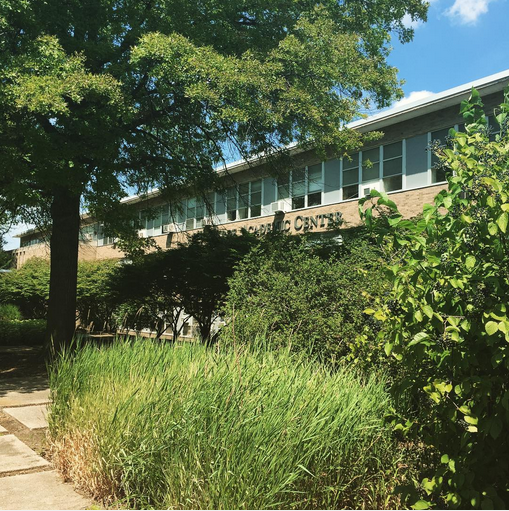
WASHINGTON (CNS) — Getting the food service at St. Xavier University to change from plastic to biodegradable cups doesn’t seem like it’s a big deal.
But for Guadalupe Avila, a senior at the Sisters of Mercy-sponsored school in Chicago, it showed that she and her fellow members of Students for Social Justice can make a difference when it comes to the earth’s environmental future.
Now she’s ready to tackle Congress.
Avila, 21, was one of about 20 students from schools affiliated with the Mercy sisters who were spending several days in Washington learning about the final rules under President Barack Obama’s Clean Power Plan and the little-known federally administered Green Climate Fund that supports local environmental initiatives.
The students were in the U.S. Capitol Aug. 4 learning about the Clean Power Plan from representatives of the Catholic Climate Covenant, the Franciscan Action Network, the Friends Committee on National Legislation, WE ACT for Environmental Justice and the Religious Action Center of Reform Judaism.
Avila said she journeyed to Washington a few weeks before the start of fall classes because she wanted to become involved in actions to protect the environment and that visiting the offices of members of Congress to urge them to support the Clean Power Plan was one way to do that.
“I want the future to stay cleaner, healthier, just not have our younger generation see a world where everything is just dirty and unfathomable,” Avila said.
Another student, Jillian Rubino, 19, a junior at Carlow University in Pittsburgh, is majoring in chemistry and is president of the campus chapter of the American Chemical Society. The group has made a push into green chemistry, focusing on environmental practices on campus.
“We’re looking at recycling, how we can change the disposal of chemicals and the disposal of waste on our campus and how people are addressing issues like water usage, power usage,” Rubino told Catholic News Service.
Rubino also planned to bring stories about the impact of the mining practice of hydraulic fracturing for natural gas on the lives of farmers and their neighbors around her hometown of Belle Vernon, Pennsylvania, southeast of Pittsburgh. She said people are concerned about the industrial nature of fracking and the potential to contaminate water supplies and destroy forests.
It was the Clean Power Plan and its relationship to the calls to care for creation made by Pope Francis in his encyclical “Laudato Si’ on Care for Our Common Home” the students were eager to learn about.
A panel of activists invited the students to include moral arguments in support of the Clean Power Plan during visits to congressional offices Aug. 5, and to stress that environmental justice must reach across all communities, especially those where low-income and people of color live.
“The principal that Pope Francis is weaving throughout his papacy is that realities are more important than ideas,” Lonnie Ellis, associate director of the Catholic Climate Covenant told the group. “We see that in ‘Evangelii Gaudium’ (‘The Joy of the Gospel’) and the encyclical. It is the way he goes out to reach out to people. He’s not stuck in dogmatic ways of operating.”
Much of the discussion focused on the importance of achieving environmental justice for all people.
Jalonne White-Newsome, director of federal policy at New York-based WE ACT for Environmental Justice, said that working for environmental justice involves “amplifying the voices of the people who are not most integrated,” into society and political processes.
“Environmental justice is not separated from the faith community or the moral need to act. Everyone deserves a voice no matter what our zip code or income level,” she said.
The Clean Power Plan requires that states reduce greenhouse gas emissions from power plants by 32 percent from a decade ago by 2030 from a decade ago. It includes requirements that local communities are part of the process for developing plans to meet the requirement.
“We must make sure states keep equity in implementing the plan,” White-Newsome told the students. “We must make sure the solutions are not detrimental to our communities.”






